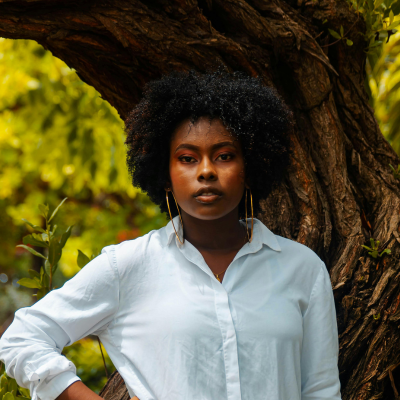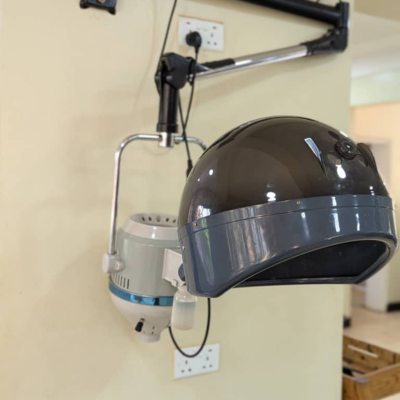- Support 24/7
- +1 (480) 468-4543
- livara@mylivara.com
What Is Dehydrated Hair? A Deep Dive into Thirsty Strands

How to Get Thicker Hair: 9 Expert Tips
June 21, 2024
How To Give Your Hair A Boost With Steaming
July 8, 2024
We’ve all encountered the woes of dry hair – it becomes dull, brittle, and prone to breakage, a hairstylist’s nightmare. But what if your hair isn’t just dry, it’s dehydrated? As it turns out, hair can get dehydrated too, and knowing when this is the case is crucial for tackling the problem effectively.
Understanding the Difference: Dryness vs. Dehydration
Here’s the breakdown:
- Dehydrated hair: This is caused by a lack of water deep down in the hair shaft. It can happen from things like heat styling, coloring, swimming in chlorine, or even just living in a dry climate. Dehydrated hair feels rough and brittle, and it might even have split ends. It can also be frizzy and dull, even if your scalp feels oily.
- Dry hair: This one is more about a lack of moisture on the surface of the hair. Hair generally feels rough and lifeless.
Dehydrated hair needs a two-pronged attack:
- Hydrate from the inside out: Drinking plenty of water and eating water-rich foods like fruits and veggies helps your whole body, including your hair.
- Protect and nourish your hair: Be gentle with heat styling, avoid harsh chemicals, and use hair products that add moisture and protein. Dehydrated hair craves this combo!
The good news: with a little extra water and some TLC, you can turn your dehydrated hair back into healthy, shiny locks! Read on as we explore more.
Signs Your Mane is Thirsty
How can you tell if your hair is dehydrated? Here are some key detectives to watch:
- Elasticity Woes: Gently stretch a damp strand of hair. Does it snap easily instead of stretching and bouncing back? This lack of elasticity signifies dehydration.
- Frizz Frenzy: Dehydrated hair is a magnet for frizz, especially in humid weather. The lack of internal water makes it more susceptible to absorbing moisture from the air, causing unwanted puffiness.
- Dull and Lifeless: Dehydrated hair often loses its natural shine and vibrancy. No matter how much shine serum you use, your hair appears dull and lifeless.
- Split End City: Dehydration weakens the hair shaft, making it more prone to split ends. You might notice an increase in split ends or see existing ones travel further up the hair strand.
The Culprits Behind Dehydration
Several factors can contribute to dehydrated hair, making it important to address the root cause:
- Heat Styling: Regular blow drying, straightening, or curling irons can strip away moisture from your hair, leaving it parched.
- Chemical Treatments: Coloring, perming, or relaxing treatments can damage the hair cuticle, the outermost layer. A compromised cuticle makes it difficult for hair to retain moisture.
- Environmental Factors: Sun exposure, harsh weather conditions (wind, extreme cold), and even chlorine in swimming pools can all contribute to dehydration.
- Diet and Hydration: Dehydration from the inside out can affect your hair. Make sure you’re drinking plenty of water throughout the day! Additionally, a diet lacking essential vitamins and minerals can hinder hair health.
The Quench Quest: Rehydrating Your Hair
If your hair is dehydrated, fear not! There are ways to restore its moisture balance and get those locks back to their healthy, happy selves. Here’s your roadmap to rehydration:
- Deep Condition Regularly: Deep conditioners are your hair’s moisture heroes. They penetrate the hair shaft, delivering a concentrated dose of hydration. Look for ingredients like shea butter, coconut oil, and hyaluronic acid, which are known for their moisture-retaining properties. Aim for deep conditioning treatments at least once a week, or more frequently if your hair is severely dehydrated.
- Leave-In Love: Leave-in conditioners provide a vital layer of moisture that helps prevent dehydration throughout the day. Choose a lightweight leave-in conditioner formulated for your hair type. Apply it to damp hair, focusing on the mid-lengths and ends, to lock in moisture and prevent frizz.
- Embrace Gentle Cleansing: Harsh shampoos can strip away natural oils from your scalp, which can further dry out your hair. Opt for a gentle, sulfate-free shampoo that cleanses without being overly stripping. Consider co-washing (conditioning washing) a few times a week to cleanse your scalp gently while adding moisture.
- Heat Styling on Low: If you can’t ditch the heat styling tools entirely, try to use them on the lowest heat setting possible. This will minimize heat damage and moisture loss. Always apply a heat protectant spray before using any heat styling tool to create a barrier between your hair and the heat source.
- Drink Up!: We all know water is essential for overall health, and that includes your hair. Aim for eight glasses of water a day to stay hydrated from the inside out. Proper hydration plumps up your hair strands and improves their elasticity.
- Diet for Shine: Eating a balanced diet rich in vitamins and minerals can nourish your hair from the inside out. Include plenty of fruits, vegetables, and healthy fats in your diet. Biotin, vitamin E, and omega-3 fatty acids are particularly beneficial for hair health.
- Bonus Tip: Consider a clarifying shampoo like the Tsavorite Clarifying Treatment Hair Shampoo once a month to remove product buildup, which can prevent proper moisture absorption. However, use this sparingly as it can also strip away natural oils.
Beyond the Basics: Advanced Tips for Dehydrated Hair
- Hair Masks: DIY magic can be found in your kitchen! Create a natural hair mask using ingredients like avocado, honey, or yogurt. These ingredients are rich in beneficial fats and vitamins that can deeply nourish your hair. Apply the mask to damp hair, leave it on for 20-30 minutes, and rinse thoroughly.
- Scalp Care: A healthy scalp is crucial for healthy hair growth. Dehydration can sometimes lead to a dry, itchy scalp. Use a gentle scalp scrub once a week to remove dead skin cells and stimulate blood circulation. Look for scalp scrubs with hydrating ingredients like aloe vera or jojoba oil.
- Steam Treatment: Steaming your hair can help open up the hair cuticle, allowing for better penetration of moisture treatments. You can achieve a steam treatment at home by showering with hot water for a few minutes, wrapping your head in a towel, and letting the steam work its magic. Alternatively, some deep conditioners come with a heating cap that can be used to create a similar effect.
- Silk or Satin Pillowcase: Cotton pillowcases can absorb moisture from your hair while you sleep. Consider switching to a silk or satin pillowcase, which creates a smoother surface that reduces friction and helps your hair retain moisture.
- Hair Wrapping: Wrapping your hair in a microfiber towel or a silk/satin scarf after showering can help prevent moisture from evaporating. This technique is particularly helpful for curly or coily hair types like 4C.
- Professional Treatments: If your hair is severely dehydrated and home remedies aren’t cutting it, consider seeking professional help from a hairstylist. They can recommend stronger deep conditioning treatments or salon-grade products specifically formulated for dehydrated hair.
Remember: Consistency is key! Dehydration doesn’t happen overnight, and neither will its reversal. Be patient with your hair and stick to your new hair care routine. With consistent effort, you’ll see and feel a noticeable difference in the health and hydration of your hair.
Final Thoughts
Dehydrated hair can be a real struggle, but with the right knowledge and approach, you can restore its moisture balance and achieve healthy, vibrant locks. By understanding the subtle difference between dry and dehydrated hair, identifying the culprits, and implementing these tips, you can transform your hair from thirsty to thriving. Remember, a little extra care and some adjustments to your routine can go a long way in bringing your hair back to life! Remember, you are a gem.



